ASUS Prime Z270-A Motherboard Review
ASUS Prime Z270-A Overview
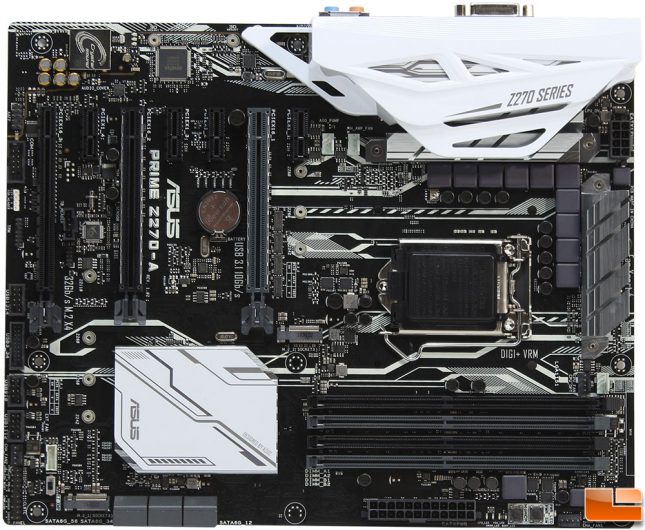
The ASUS Prime Z270-A has a classic neutral color scheme, featuring a black PCB with white accents. The rear I/O port and the Intel Z270 chipset heatsink has a white cover, with some silver accent lines. This motherboard should fit any color scheme you want to do. At a high level, the Prime Z270-A is a standard ATX motherboard for the latest generation socket 1151 processors (both Skylake and KabyLake), with three PCIe x16, four PCIe x1 slots, 4x DDR4 slots, support for six SATA 3.0 Gb/s drives, and two M.2 drives. Let’s take a quick look around the motherboard to see what other features it has.

The rear I/O configuration is fairly condensed, but still contains all the necessary ports. Usually, we find the first cluster to contain the classic PS/2 Keyboard/Mouse connection or some USB ports. On the Prime Z270-A, ASUS has placed USB 3.1 Gen 2 Type-A and Type-C ports in the first set. Next we have the video connections, which consist of DVI, DisplayPort and HDMI. Then we find the old school PS/2 Keyboard/Mouse port, along with two USB 3.1 Gen 1 ports. Followed by the Intel I219-V Gigabit Ethernet port and two more USB 3.1 Gen 1 ports. Finally, we have the audio cluster powered by Realtek S1220A 8-channel CODEC, with Crystal Sound 3.
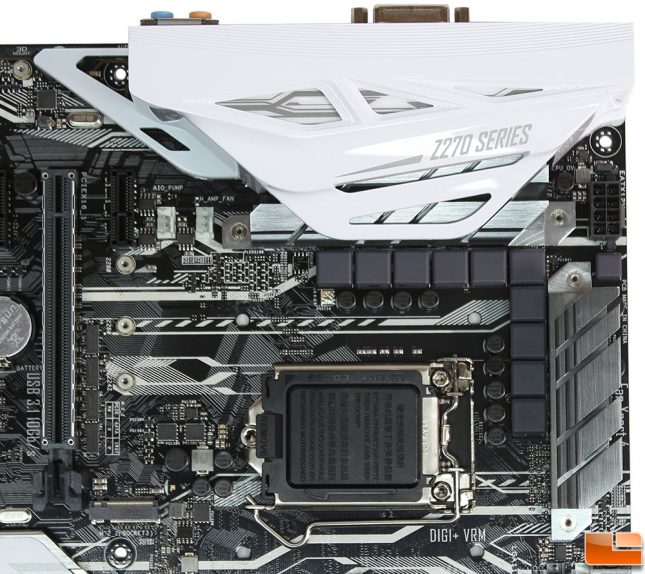
The MOSFET heatsinks are located on two sides of the CPU socket, and are simple passive heatsinks. The Chokes or capacitors aren’t covered by the heatsinks, only the MOSFET’s are. Along the right edge is the standard 8-pin Aux power connector. To the left of the top MOSFET heatsink is two 4-pin fan headers, one designated for the AIO_Pump, and the second listed as H_AMP_FAN.
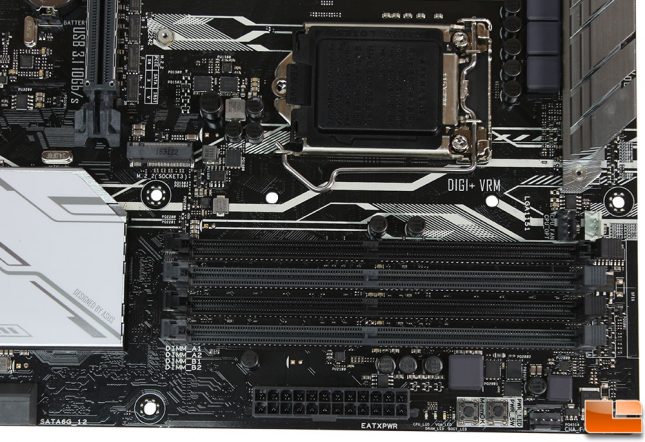
In the lower right section, we find the standard DDR4 slots, that supports up to 64GB of memory, at 4266MHz. Along the right edge, above the DDR4 slots is two 4-pin fan headers, listed as CPU_FAN and CPU_OPT. Along the bottom edge, beneath the memory slots we find the main 24-pin power connector. Then there are a few small debugging LED’s for CPU, Memory, VGA and Boot Device. Two buttons are included for MemOK (to try getting the motherboard to work with non-compatible memory), and Power Switch. A 4-pin CHA_FAN header completes the bottom edge of the motherboard.
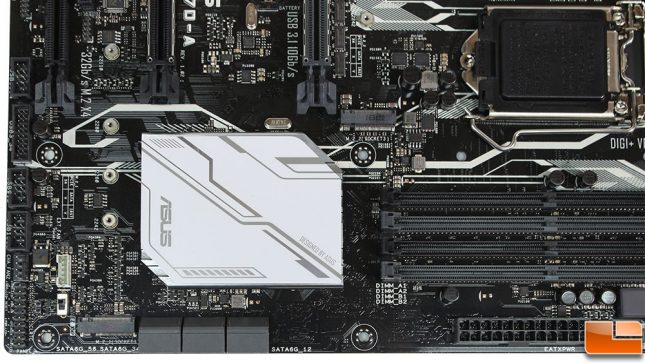
Continuing on to the lower left corner we find the Intel Z270 chipset, with an oversize aluminum heatsink, along with a white and silver cover. For storage, there are six SATA 6GB/s ports heading off the edge of the motherboard, and a large M.2 that is up to 22110 M-Key device. This M.2 is compatible with both SATA and PCIe devices, along with the latest Intel Optane drives. Directly next to the M.2 slot is the EZ-XMP switch, and a 5-pin fan header (EXT_FAN). The EZ-XMP switch is disabled by default, switching it to on automatically overclocked the installed memory. Along the left edge of the motherboard are various connections, starting with the normal front panel headers, a 4-pin fan connection (CHA_FAN2), two USB 2.0, a USB 3.0 and another USB 2.0 connection.
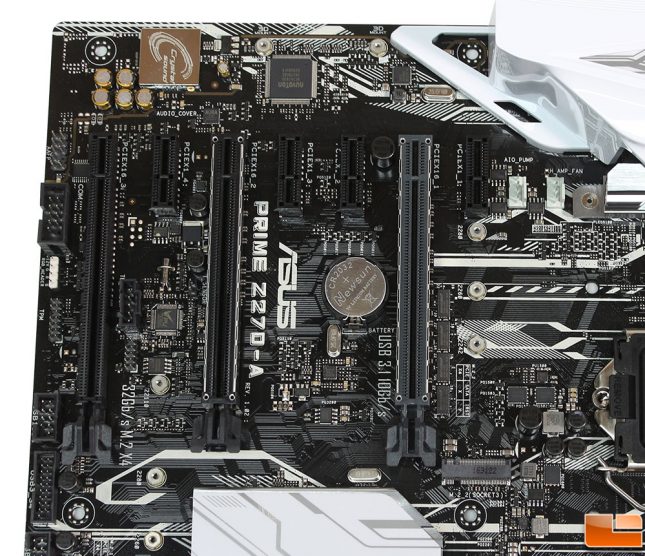
Turning our attention to the last section of the motherboard, we find the usual PCIe expansion slots. ASUS has done a great job at making sure there is plenty of room between the first PCIe x16 slot and the rear I/O port cover, by placing a PCIe x1 slot to the right of the first PCIe x16! The expansion slots include four PCIe 3.0 x1 slots, and 3 PCIe 3.0 x16 slots. Starting with the first x16 slot, it will run at x16 is using just one GPU. If running two, you’re going to be running at x8/x8. For those that are concerned about the weight of modern graphics cards, ASUS has added steel reinforcements to the first two PCIe x16 slots. To the right of the first PCIe x16 slot is one of the two M.2 slots, this one is limited to PCIe devices with M-Key, up to 2280 in length. Along the top edge of the board, we find the Realtek S1220A Crystal Sound 3 chip, which is behind the LED lighted line. Along the left edge, we find a range of headers, starting at the top connector, we have the front panel audio, an old school serial COM port, RGB LED strip connector, TPM, USB 2.0 and finally the USB 3.0 connector. For those of you that have 3D printers, ASUS has a number of templates available to customize your motherboards, the Prime Z270-A has a 3D Printed part mounting screws along the edge of the motherboard, between the first two PCIe x16 slots.
